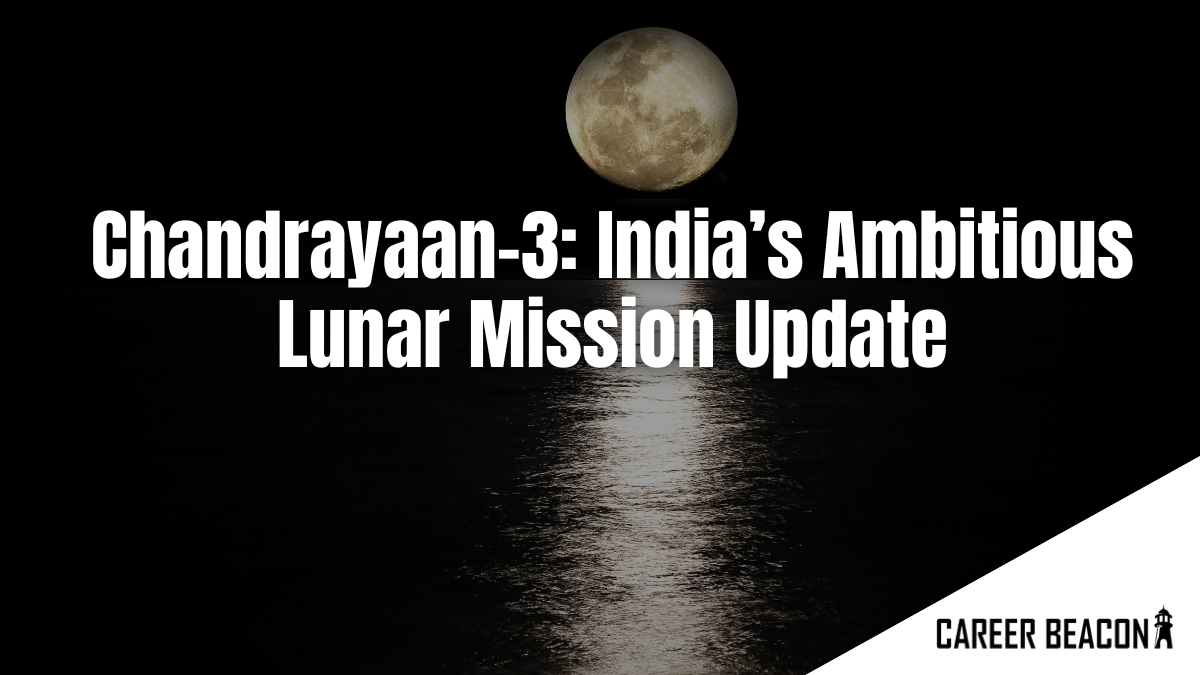
Chandrayaan-3: India’s Ambitious Lunar Mission Update
Introduction
Space exploration has always captivated the imagination of humanity, and India has consistently been at the forefront of this awe-inspiring journey. Following the success of Chandrayaan-1 and Chandrayaan-2, the Indian Space Research Organisation (ISRO) has been diligently working on Chandrayaan-3, the nation’s ambitious third lunar mission. In this blog, we will delve into the latest updates on Chandrayaan-3, its objectives, and the significance of this mission for India and the global space community.
Background
Chandrayaan-1, launched in 2008, was India’s maiden lunar mission, which made significant contributions to lunar science, including the discovery of water molecules on the moon’s surface. Building on this success, Chandrayaan-2, launched in 2019, aimed to explore the moon’s south polar region more extensively, but the lander Vikram unfortunately crash-landed during the descent phase.
Chandrayaan-3: A Resilient Endeavor
Undeterred by the challenges faced during Chandrayaan-2, ISRO has embarked on the Chandrayaan-3 mission with renewed vigor. The primary objective of this mission is to achieve a soft landing on the moon’s surface, just like its predecessor. However, learning from past experiences, ISRO has meticulously revamped the lander and ensured that every possible precaution is taken to enhance the mission’s success rate.
Technical Improvements
One of the key improvements in Chandrayaan-3 is the upgraded landing system. ISRO has integrated lessons learned from Chandrayaan-2’s landing failure, improving the navigation and guidance systems to ensure a smoother touchdown. Additionally, the lander design has been optimized for better stability and control during the descent.
Collaborative Efforts
Recognizing the significance of space cooperation, ISRO has actively sought international collaboration for Chandrayaan-3. Several countries have expressed their interest in joining hands with India for this lunar mission, leading to resource-sharing, knowledge exchange, and a more robust mission profile. Collaborative efforts not only mitigate costs but also enrich the mission with diverse expertise and perspectives.
Scientific Goals
Chandrayaan-3 aims to expand our understanding of the moon’s geology, mineralogy, and surface composition. The mission will use advanced instruments and technology to analyze the moon’s soil and rocks in search of valuable resources. Furthermore, Chandrayaan-3 intends to study the moon’s exosphere and analyze the presence of water molecules to facilitate future lunar exploration and potential human missions.
Economic and Strategic Significance
Beyond its scientific goals, Chandrayaan-3 holds immense economic and strategic importance for India. Successful lunar missions boost the nation’s prestige and showcase its technological prowess on the global stage. Moreover, the mission will stimulate the country’s space sector, fostering innovation, research, and development in the field of space exploration.
Conclusion
Chandrayaan-3 stands as a testament to India’s unwavering commitment to space exploration. With its upgraded technology, international collaboration, and scientific objectives, the mission represents a giant leap for the nation’s space ambitions. As we eagerly await Chandrayaan-3’s launch and subsequent updates, it is a proud reminder that the quest for knowledge knows no bounds, and humanity’s journey into the cosmos continues to inspire generations to come.


